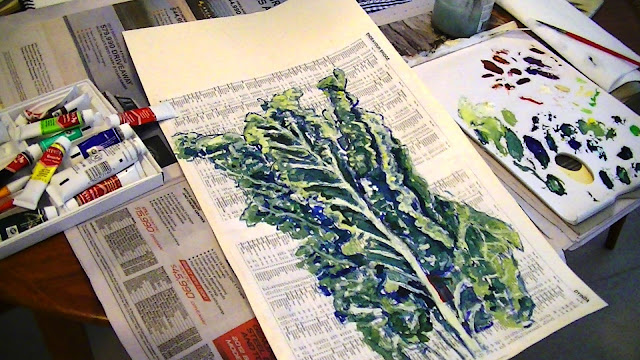 |
| Appeals without Word, 2006 by Jin Feng Inkjet print |
I went to the White Rabbit Gallery in Sydney this weekend as
the new exhibition is up and running. As
you may remember from a previous blog
post, the White Rabbit is a private gallery of contemporary Chinese and Taiwanese art. It is free to the public and none of the art
is for sale but there is a nice café and gift shop if you did want to spend a
few coins. As usual the new show is
thought provoking. I enjoyed it very much.
On the ground floor there is a very long print of people standing in line, no one looks happy and they are covered in gold. This is a piece by Jin Feng (born 1962, Shanghai) and is called Appeals without Words, 2006. This is about China’s justice system which allows people to make complaints about corruption and injustices but the petitioners often wait for years to be heard. He has covered his line of people in gold as they are waiting so long they might as well be statues. At the top of this post is a portion of this print.
On the top floor of the gallery there is a weather balloon which is inflating larger and larger, pressing into the ceiling and the material becoming more and more stretched. I was becoming a little nervous watching it and that was the idea of the artist Zhou Xiaohy (born 1960 in Changzhou, Jiangsu). He thinks that modern Chinese are increasing anxious as they are driven by the desire for more and more consumer goods. The balloon makes us worry about how much more it will grow and will it explode. As in China today, there is no getting away from the worry, when the balloon deflates, our worries reduce but shortly the balloon grows again.
I enjoyed the mixed media art work of Bai Yiluo (born 1968)
called Recycling 2008. I think I could
relate to this piece (boo hoo) which was in effect a great big heart sitting on
the back of a bike with alot of other recycling. The artists asks “what if someone decides to
sell their heart cheap to the first guy who came around collecting rubbish for
recycling”. The information board explains that
this artist has been on both sides of the metaphorical transaction, he has romantically given his heart away and also as
an artist, has used other people’s longings and heart breaks, turning them into art.
On the ground floor there is a very long print of people standing in line, no one looks happy and they are covered in gold. This is a piece by Jin Feng (born 1962, Shanghai) and is called Appeals without Words, 2006. This is about China’s justice system which allows people to make complaints about corruption and injustices but the petitioners often wait for years to be heard. He has covered his line of people in gold as they are waiting so long they might as well be statues. At the top of this post is a portion of this print.
On the top floor of the gallery there is a weather balloon which is inflating larger and larger, pressing into the ceiling and the material becoming more and more stretched. I was becoming a little nervous watching it and that was the idea of the artist Zhou Xiaohy (born 1960 in Changzhou, Jiangsu). He thinks that modern Chinese are increasing anxious as they are driven by the desire for more and more consumer goods. The balloon makes us worry about how much more it will grow and will it explode. As in China today, there is no getting away from the worry, when the balloon deflates, our worries reduce but shortly the balloon grows again.
Zhou Jie (born 1986 in Changde, Hunan) has produced a mini
city called CBD 2010. The city is made
out of porcelain and it sits on a bed of rice.
The materials used, of course, relate to China’s cultural heritage. The information board tells us that Jie is concerned
about urban development invading nature, upsetting the balance.
There is many more interesting artworks at The White Rabbit Gallery and I recommend everyone who lives in Sydney, or visits it, to have a look. There are plenty of very knowledgeable staff there who are happy to explain more about the work but I found the information boards explain the art very well..



































